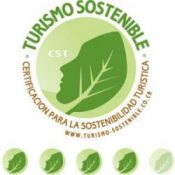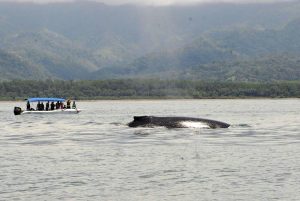 In Costa Rica there are two seasons to spot the humpback whales. They migrate from their feeding areas in the North and South Americas to our warm tropical waters for mating. These whales are characterized as being very sociable, but usually travel alone or with their offspring. They are rarely found in groups, which are mostly formed by males, to compete for the females. One of the strategies the whales use during their breeding season is to stay in warm shallow waters, such as bays, because their geographic features provide better protection for their young, known as a calves.
In Costa Rica there are two seasons to spot the humpback whales. They migrate from their feeding areas in the North and South Americas to our warm tropical waters for mating. These whales are characterized as being very sociable, but usually travel alone or with their offspring. They are rarely found in groups, which are mostly formed by males, to compete for the females. One of the strategies the whales use during their breeding season is to stay in warm shallow waters, such as bays, because their geographic features provide better protection for their young, known as a calves.
In Costa Rica we have the great Coronado Bay located in the South Pacific. This bay includes the waters of the Marino Ballena National Park, Drake Bay and Cano Island. The temperature and depth of the water around Cano Island provide some of the best conditions for reproduction and protection of the calves in their first weeks of life. This is also the area where the majority of migrating whales give birth to their young, giving it an important biological value. The conditions of the Coronado Bay area favor ecotourism, making it the largest in the tourism industry for the sighting of cetaceans in Costa Rica, especially for humpback whales. Three species of dolphins are seen regularly, along with the occasional visit from Bryde’s whales, pilot whales and false killer whales.
The migration of the humpbacks whales to Costa Rica occur at two different times: [Read more…]

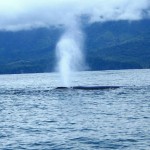 The humpback whale (Megaptera novaeangliae) is a Baleen whale. One of the larger rorqual species, adults range in length from 12-16 metres (40-50 ft) and weigh approximately 36,000 kilograms (79,000 lb). The humpback has a distinctive body shape, with unusually long pectoral fins and a knobbly head. It is an acrobatic animal, often breaching and slapping the water. Males produce a complex whale song, which lasts for 10 to 20 minutes and is repeated for hours at a time. The purpose of the song is not yet clear, although it appears to have a role in mating.
The humpback whale (Megaptera novaeangliae) is a Baleen whale. One of the larger rorqual species, adults range in length from 12-16 metres (40-50 ft) and weigh approximately 36,000 kilograms (79,000 lb). The humpback has a distinctive body shape, with unusually long pectoral fins and a knobbly head. It is an acrobatic animal, often breaching and slapping the water. Males produce a complex whale song, which lasts for 10 to 20 minutes and is repeated for hours at a time. The purpose of the song is not yet clear, although it appears to have a role in mating.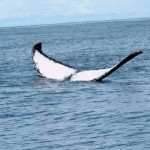 About 2/3 of the way back on the body is an irregularly shaped dorsal (top) fin. Its flippers are very long, between 1/4 and 1/3 the length of its body, and have large knobs on the leading edge. The flukes (tail), which can be 18 feet (5.5 m) wide, is serrated and pointed at the tips. Adult males measure 40-48 feet (12.2-14.6 m), adult females measure 45-50 feet (13.7-15.2 m). They weigh 25 to 40 tons (22,680-36,287 kg).
About 2/3 of the way back on the body is an irregularly shaped dorsal (top) fin. Its flippers are very long, between 1/4 and 1/3 the length of its body, and have large knobs on the leading edge. The flukes (tail), which can be 18 feet (5.5 m) wide, is serrated and pointed at the tips. Adult males measure 40-48 feet (12.2-14.6 m), adult females measure 45-50 feet (13.7-15.2 m). They weigh 25 to 40 tons (22,680-36,287 kg).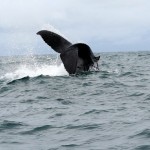
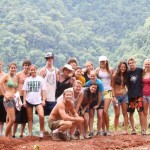 Bahia Aventuras has started organizing plans to host several student travel groups for the summer of 2010 in Uvita-Bahia Ballena.
Bahia Aventuras has started organizing plans to host several student travel groups for the summer of 2010 in Uvita-Bahia Ballena.  will work closely with community members on small-scale construction, environmental, and social projects that will contribute to community’s economic development. By working alongside community members the students will immerse in the flow of life in the friendly beach town of Uvita-Bahia Ballena and learn about the culture of PURA VIDA! Radical sunsets, beaches lined with palm trees, crystal clear blue water, and friendly locals all contribute to a great week for the students in Uvita-Bahia Ballena.
will work closely with community members on small-scale construction, environmental, and social projects that will contribute to community’s economic development. By working alongside community members the students will immerse in the flow of life in the friendly beach town of Uvita-Bahia Ballena and learn about the culture of PURA VIDA! Radical sunsets, beaches lined with palm trees, crystal clear blue water, and friendly locals all contribute to a great week for the students in Uvita-Bahia Ballena.
